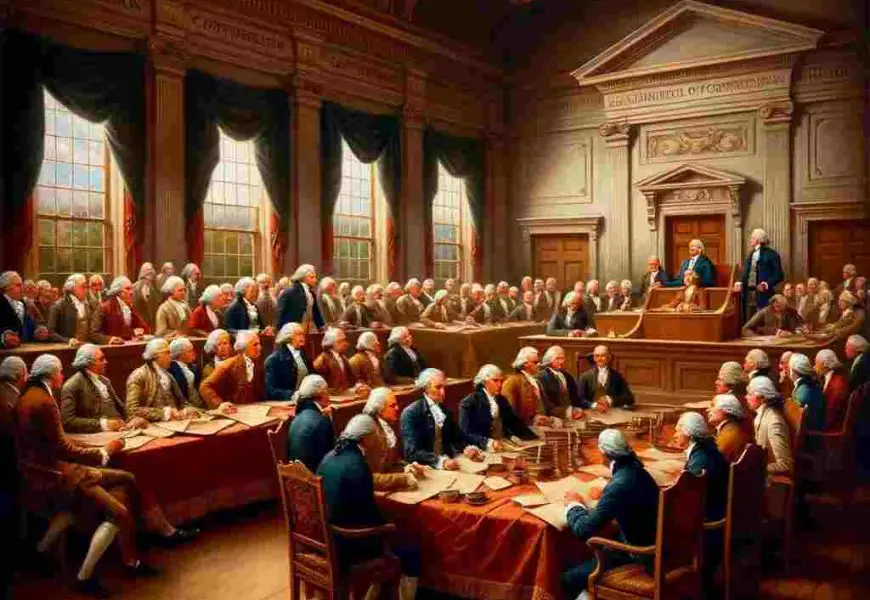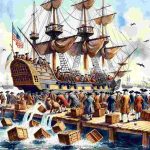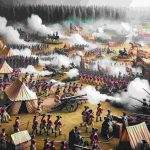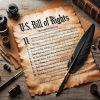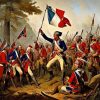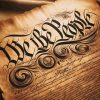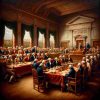In the chronicles of American history, Articles of Confederation (1777-1781): America’s First Framework of Governance address a fundamental part that established the groundwork for the U.S.’s sacred excursion. This drawn-out article will dive into the complexities of this essential archive, investigating its creation, assets, and, all the more fundamentally, its weaknesses, which eventually prompted the introduction of the U.S. Constitution.
Introduction
The Articles of Confederation were the first constitutional experiment in the United States, with their conception occurring in 1777 and their complete ratification occurring in 1781. The Declaration of Independence was conceived during the revolutionary years of the American Revolution as an effort to unite the thirteen individual colonies into one sovereign country.
Historical Context
Initially, the U.S. was a free confederation of states with no central government. The requirement for a more organized framework was evident as the post-Progressive Conflict period experienced enormous difficulties.
Genesis of the Articles
After the Revolutionary War, there was a greater need to establish a strong government that could guarantee peace inside the country, strengthen defenses against foreign enemies, and promote economic growth.
Drafting the Articles of Confederation
The drafting system, including noticeable figures like John Dickinson and John Adams, was intended to find harmony between state sway and a focal government’s position. The composers confronted the overwhelming undertaking of making a system that would address the country’s requirements regarding the states’ independence.
Pivotal Provisions of the Articles
- State Sovereignty: Under the Articles, individual states held tremendous independence in dealing with their issues, including tax collection and volunteer armies. This accentuation on state sway was a conscious endeavor to avoid the convergence of force that had been a worry under English rule.
- Unicameral Congress: The U.S. worked with a unicameral Congress, where each state had one vote, regardless of size or populace. The designers created this framework to foster fairness among the states. However, it likewise had its downsides.
- Restricted Government Powers: The focal government had confined abilities, including failing to impose charges, which presented monetary difficulties for the country. This limit thwarted the public authority’s capacity to raise income and deal with the nation’s funds.
Challenges Posted by the Articles
- Monetary Issues: The powerlessness to burden and the shortfall of typical cash impeded financial steadiness. The absence of a bureaucratic tax collection framework made it hard for the focal government to finance fundamental capabilities like guards and foundations.
- Absence of Focal Power: The focal government could not uphold regulations or resolve questions among states, prompting mayhem. There was no presidential branch to make government regulations and no administrative or legal executive to determine clashes between states.
- Unfamiliar Relations Difficulties: The U.S. battled to tie down settlements and collisions on the global stage because of its powerless focal point. The U.S. is trying to haggle successfully with unfamiliar forces without a brought-together international strategy.
Shays’ Rebellion: A Turning Point
The growing economic inequality going unchecked at the federal level sparked the Shays’ Rebellion (1786–1787). This pivotal event highlighted the Articles’ weaknesses and the need for a more substantial central authority.
The Sacred Show:
The deficiencies of the Articles prompted the historic Convention of 1787, where the framers formulated the U.S. Constitution as a replacement. The Sacred Show united delegates from the states to address the shortcomings of the Articles and make a more vigorous and practical arrangement of government.
The Progress to the U.S. Constitution
The transition from the Articles to the Constitution denoted a critical change in American administration. The new Constitution laid out an all the more remarkable focal government with the position to exact charges, control trade, and keep everything under control inside the country.
Comparative Analysis: Articles and Constitution
By comparing and contrasting the two papers, we can see how the principles of American government have developed throughout time. The Constitution improved upon the Articles in many ways but maintained its central philosophy of a check and balance between federal and state authorities.
Legacy of the Articles of Confederation
The legacy of the Articles of Confederation is evident in the principles it established and the precedents it set for future generations of Americans. While the Articles had weaknesses, they were vital in comprehending how a country might interpret federalism, states’ privileges, and the harmony between individual freedom and concentrated power.
Conclusion
All in all, the Articles of Confederation were a crucial, yet imperfect, first endeavor at administration in the U.S. Their inheritance lives on, helping us to remember the significance of a solid focal government with obviously characterized powers and obligations.
As Articles of Confederation (1777-1781): America’s First Framework of Governance, what other historical moments do you believe played pivotal roles in shaping the nation’s destiny? Share your thoughts and continue the exploration with other articles on our site, such as Formation of the New Nation.

